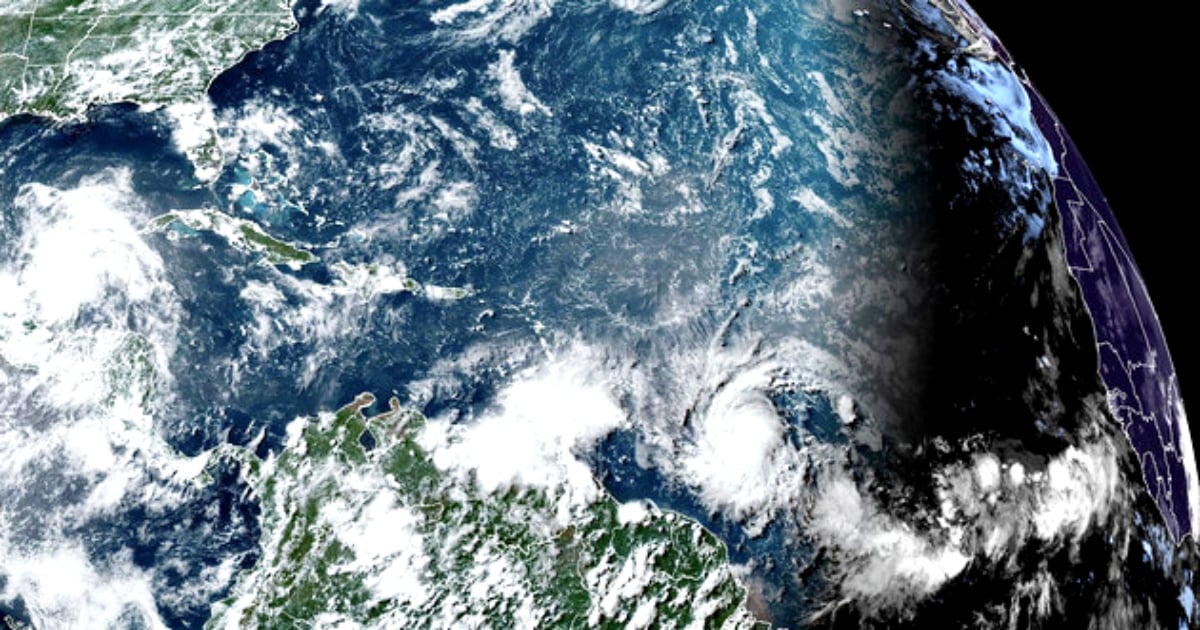Hurricane Beryl’s Impact on the Caribbean
Nhc beryl – Hurricane Beryl, a Category 3 storm, made landfall in Dominica on July 19, 2018, bringing torrential rains and strong winds to the island. The hurricane then moved across the Lesser Antilles, causing widespread damage and flooding in St. Lucia, St. Vincent and the Grenadines, Grenada, and Barbados.
The hurricane’s impact on the Caribbean was significant. The heavy rains caused widespread flooding, damaging homes, businesses, and infrastructure. The strong winds also downed trees and power lines, leaving many without electricity. The hurricane also caused significant damage to the tourism industry, as many hotels and resorts were forced to close.
Damage and Flooding
The damage caused by Hurricane Beryl was extensive. In Dominica, the hurricane destroyed over 2,000 homes and left thousands of people homeless. The hurricane also caused significant damage to the island’s infrastructure, including roads, bridges, and schools. In St. Lucia, the hurricane caused flooding and landslides, which damaged homes and businesses. The hurricane also caused significant damage to the island’s banana crop, which is a major source of income for the island.
In St. Vincent and the Grenadines, the hurricane caused widespread flooding and damage to homes and businesses. The hurricane also caused significant damage to the island’s agriculture, including the banana and coconut crops. In Grenada, the hurricane caused flooding and landslides, which damaged homes and businesses. The hurricane also caused significant damage to the island’s nutmeg crop, which is a major source of income for the island.
The National Hurricane Center (NHC) is monitoring Tropical Storm Beryl, which is expected to strengthen into a hurricane. Beryl is currently located about 1,000 miles east of the Lesser Antilles, and is moving west-northwest at 14 mph. If Beryl continues on its current path, it is likely to impact the Caribbean islands, including Barbados.
For the latest updates on Hurricane Beryl, visit the Barbados Hurricane Beryl website. The NHC will continue to monitor the storm and provide updates as they become available.
In Barbados, the hurricane caused flooding and damage to homes and businesses. The hurricane also caused significant damage to the island’s tourism industry, as many hotels and resorts were forced to close.
National Hurricane Center (NHC) tracking nhc beryl has upgraded it to tropical storm status. For the latest spaghetti models, check out this article: tropical storm beryl spaghetti models. NHC also advises residents to stay informed and follow safety precautions as the storm progresses.
Impact on Infrastructure, Tourism, and Local Economies
The impact of Hurricane Beryl on the Caribbean was significant. The hurricane caused widespread damage to infrastructure, tourism, and local economies. The damage to infrastructure will take months or even years to repair, and the impact on tourism will likely be felt for even longer. The hurricane also had a significant impact on the local economies of the affected islands, as many businesses were forced to close and many people lost their jobs.
Beryl’s Forecast and Tracking: Nhc Beryl

Hurricane Beryl emerged as a tropical depression on July 5, 2018, over the eastern Atlantic Ocean. Within a day, it strengthened into a tropical storm and was named Beryl. The storm continued to intensify as it moved west-northwestward, becoming a hurricane on July 7. Beryl’s track was influenced by a combination of factors, including steering currents, atmospheric pressure gradients, and sea surface temperatures.
Forecast Challenges
Predicting the path of a hurricane is a complex task due to the numerous factors that can affect its movement. These include changes in wind patterns, interactions with other weather systems, and variations in sea surface temperatures. Even with advanced weather models and forecasting techniques, it can be challenging to accurately predict a hurricane’s exact path and intensity.
Importance of Accurate Forecasting
Accurate hurricane forecasting is crucial for disaster preparedness and response. It allows communities to have ample time to evacuate, secure property, and take necessary precautions. Early and accurate warnings can save lives and minimize property damage. Continuous monitoring and refinement of hurricane forecasts are essential to ensure the safety of coastal populations.
Preparedness and Response Measures

Prior to Hurricane Beryl’s arrival, affected areas implemented various preparedness measures. These included public awareness campaigns, evacuation plans, and the pre-positioning of emergency supplies. The effectiveness of these measures varied depending on the specific location and the severity of the storm’s impact.
Evacuation Plans
Evacuation plans were developed and implemented to guide residents away from areas at risk of flooding or other hazards. In some cases, these plans were effective in minimizing the number of casualties and the extent of property damage. However, in other cases, evacuations were not carried out in a timely manner or residents were reluctant to leave their homes, resulting in increased risks to life and property.
Emergency Response Systems, Nhc beryl
Emergency response systems were activated to provide assistance to those affected by the storm. These systems included search and rescue operations, medical assistance, and the distribution of food and water. The effectiveness of these systems varied depending on the resources available and the ability of responders to reach affected areas.
Lessons Learned and Recommendations
The experience of Hurricane Beryl has highlighted the importance of effective hurricane preparedness and response measures. Lessons learned from this storm can be used to improve future preparedness efforts, including:
- The need for timely and accurate evacuation plans.
- The importance of public education and awareness campaigns.
- The need for adequate resources and training for emergency responders.
- The importance of coordination between different levels of government and agencies.
By implementing these lessons learned, communities can better prepare for and respond to future hurricanes, reducing the risk of casualties and property damage.